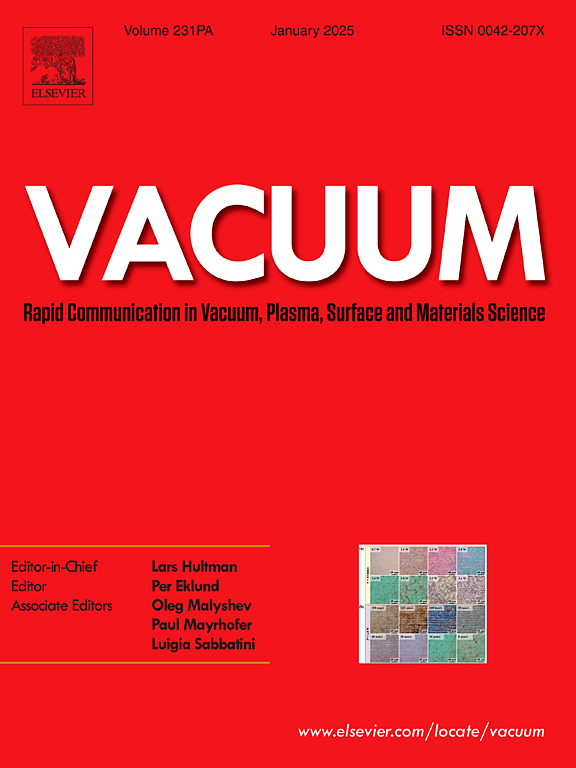Role of pre-ageing treatment on microstructure evolution and strengthening mechanism of as-extruded Mg-Gd-Y-Mn-Sc alloy
IF 3.8
2区 材料科学
Q2 MATERIALS SCIENCE, MULTIDISCIPLINARY
引用次数: 0
Abstract
The extruded Mg-8Gd-4Y-1Mn-0.4Sc (wt. %) alloy was fabricated by pre-ageing treatment and hot extrusion. Microstructure evolution and mechanical properties of the alloys with or without pre-ageing treatment were studied. The results show the dense nano-sized β′ phases and sub-micron particles precipitates inside grains after pre-ageing treatment, and the β’ phases coarsens and transforms into sub-micron β particles during pre-heating treatment. These particles obstructs the dynamic recrystallization process and restricts the grain growth during hot extrusion. Therefore, the bimodal microstructure composed of elongated un-dynamically recrystrallized (un-DRXed) grains and fine DRXed grains is formed in as-extruded Mg-8Gd-4Y-1Mn-0.4Sc (wt. %) alloys with or without pre-ageing treatment. The pre-aged-extruded (PE) sample exhibits a lower fraction of DRXed grains and densely distributed fine precipitates. The homogenized-extruded (HE) sample shows the optimal combination of strength and ductility, with tenslile yield strength (TYS) of 360 MPa, ultimate tensile strength (UTS) of 410 MPa, and elongation (EL) of 11.4 %, which is attributed to the bimodal microstructure, strong basal texture, and quantity of precipitated particles. The high fraction of un-DRXed regions and excessive sub-micron particles degrades the strength and ductility of PE sample.
预时效处理对挤压态Mg-Gd-Y-Mn-Sc合金组织演变及强化机理的影响
采用预时效和热挤压法制备了Mg-8Gd-4Y-1Mn-0.4Sc (wt. %)挤压合金。研究了预时效处理前后合金的组织演变和力学性能。结果表明:预时效处理后,晶粒内部析出致密的纳米级β′相和亚微米级β′颗粒;预时效处理后,β′相粗化并转变为亚微米级β颗粒;这些颗粒阻碍了动态再结晶过程,限制了热挤压过程中晶粒的长大。因此,经过预时效处理或未经过预时效处理的Mg-8Gd-4Y-1Mn-0.4Sc (wt. %)合金在挤压状态下形成由伸长的非动态再结晶(undrxed)晶粒和细小的DRXed晶粒组成的双峰组织。预时效挤压(PE)试样的DRXed晶粒含量较低,细相分布较密。均质挤压(HE)试样的抗拉屈服强度(TYS)为360 MPa,极限抗拉强度(UTS)为410 MPa,伸长率(EL)为11.4%,这主要归功于双峰组织、强基织构和大量的析出颗粒。高比例的非drxed区和过量的亚微米颗粒降低了PE样品的强度和塑性。
本文章由计算机程序翻译,如有差异,请以英文原文为准。
求助全文
约1分钟内获得全文
求助全文
来源期刊

Vacuum
工程技术-材料科学:综合
CiteScore
6.80
自引率
17.50%
发文量
0
审稿时长
34 days
期刊介绍:
Vacuum is an international rapid publications journal with a focus on short communication. All papers are peer-reviewed, with the review process for short communication geared towards very fast turnaround times. The journal also published full research papers, thematic issues and selected papers from leading conferences.
A report in Vacuum should represent a major advance in an area that involves a controlled environment at pressures of one atmosphere or below.
The scope of the journal includes:
1. Vacuum; original developments in vacuum pumping and instrumentation, vacuum measurement, vacuum gas dynamics, gas-surface interactions, surface treatment for UHV applications and low outgassing, vacuum melting, sintering, and vacuum metrology. Technology and solutions for large-scale facilities (e.g., particle accelerators and fusion devices). New instrumentation ( e.g., detectors and electron microscopes).
2. Plasma science; advances in PVD, CVD, plasma-assisted CVD, ion sources, deposition processes and analysis.
3. Surface science; surface engineering, surface chemistry, surface analysis, crystal growth, ion-surface interactions and etching, nanometer-scale processing, surface modification.
4. Materials science; novel functional or structural materials. Metals, ceramics, and polymers. Experiments, simulations, and modelling for understanding structure-property relationships. Thin films and coatings. Nanostructures and ion implantation.
 求助内容:
求助内容: 应助结果提醒方式:
应助结果提醒方式:


